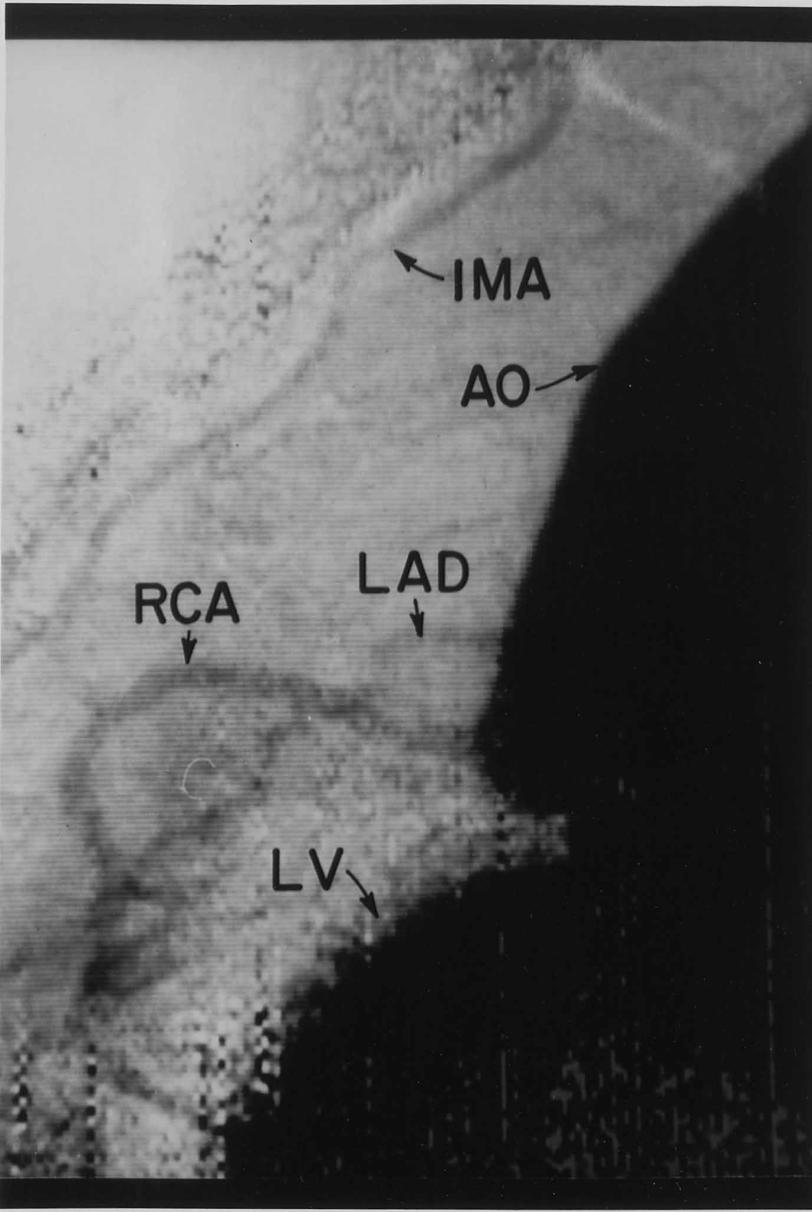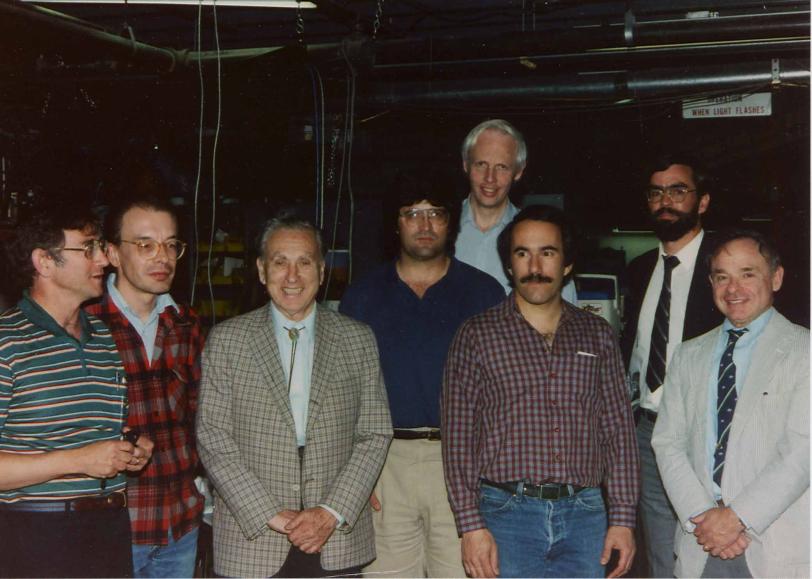SSRL Angiogram
SSRL angiogram, 5/1986
The first synchrotron radiation coronary angiogram recorded on a human subject occurred in May 1986 at the Stanford Synchrotron Radiation Laboratory (SSRL). The study is believed to have been the first synchrotron radiation imaging procedure performed on a human being. As of 2002, some 500 intravenous coronary angiograms had been recorded at SSRL, NSLS, DESY, and ESRF, all without complication. By 2010, the American Heart Association reports that over 600,000 such procedures are being performed annually in the United States. (In the angiogram, the following structures are identified: AO, ascending aorta; LV, left ventricle; IMA, internal mammary artery; LAD, left anterior descending coronary artery; RCA, right coronary artery.)


- Selected pages from SSRL Activity Report for 1986, SSRL Report 87/01
- Transvenous coronary angiography in humans using synchrotron radiation, Proc Natl Acad Sci U S A, December 1986, 83(24), p. 9724–9728
- Synchrotron X-rays Probe Coronary Arteries, Science, December 1986, Vol. 234, p. 1322-132
- "Circulation" Roger et al. The American Heart Association's (AHA) Heart Disease and Stroke Statistics 2011 Update, 123 (4): e18 (Citation on p e194)
Note: Some links on this page open pdf files, which require the free Acrobat Reader.
